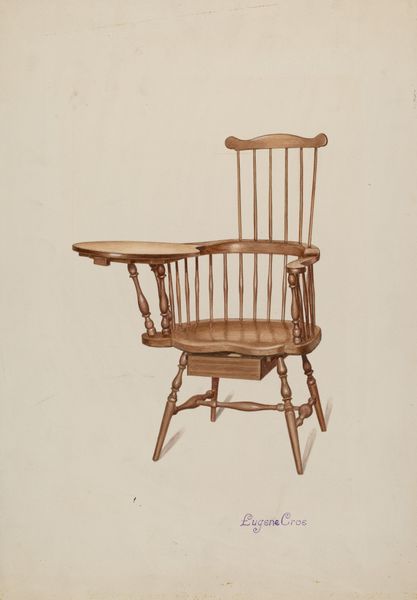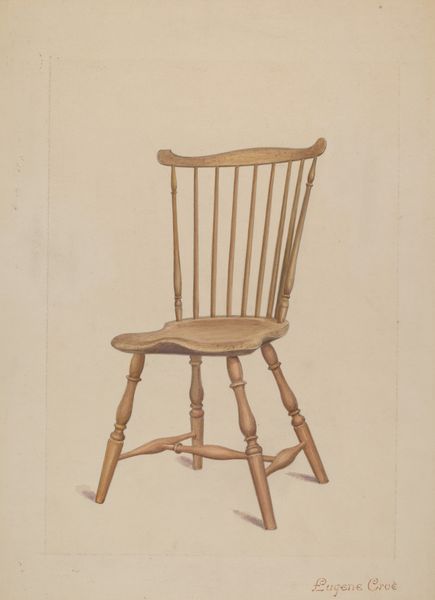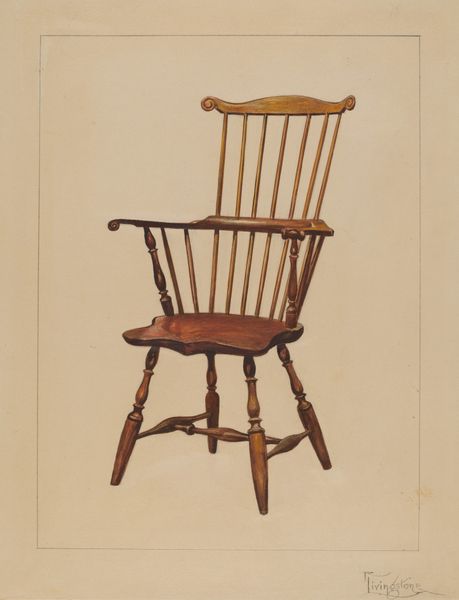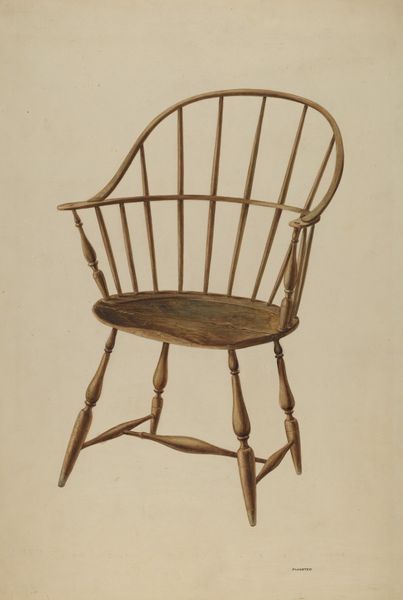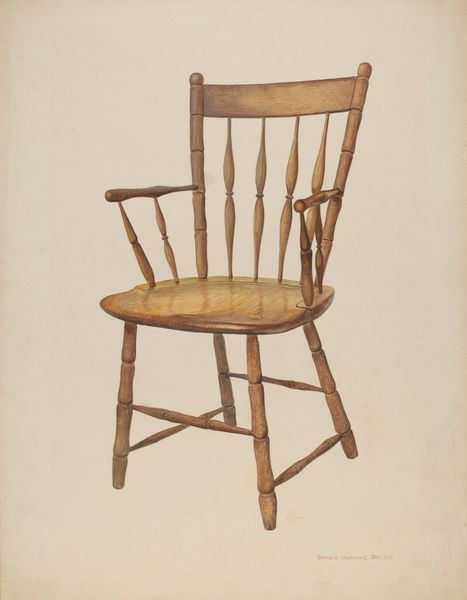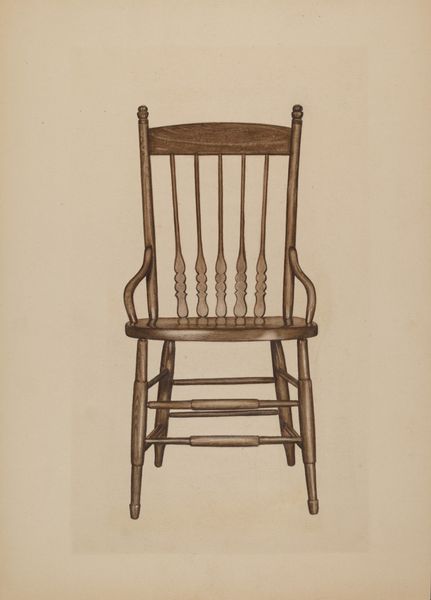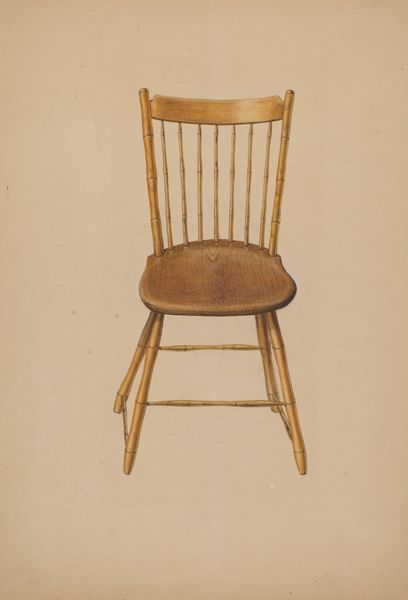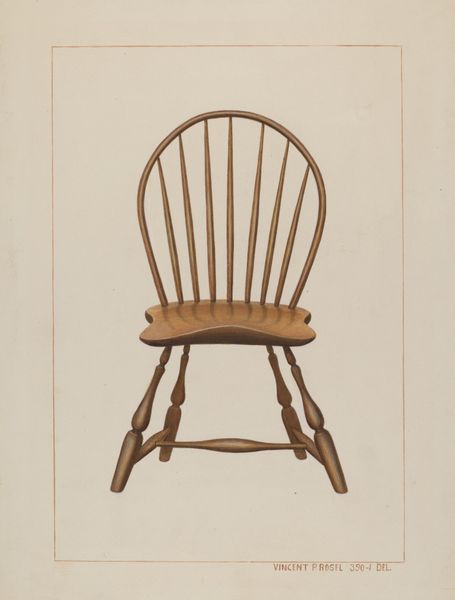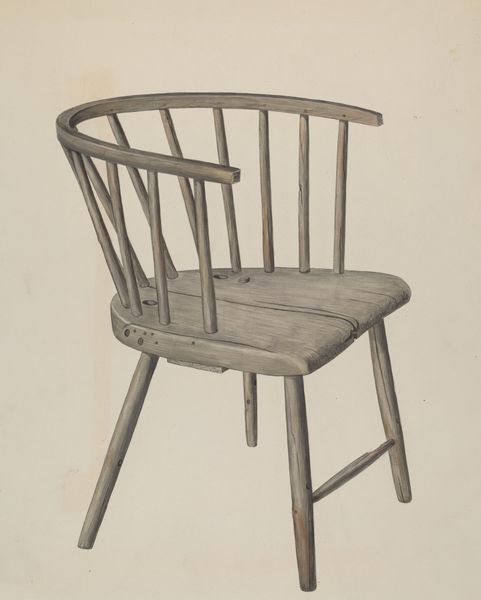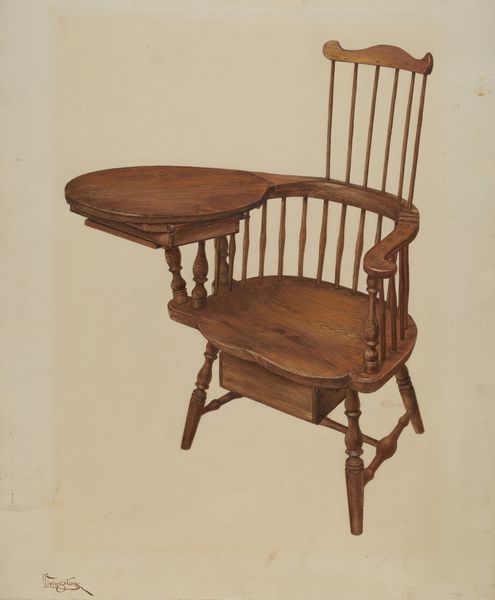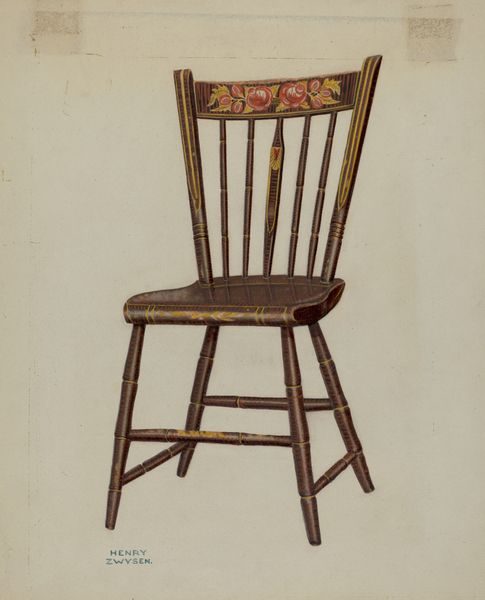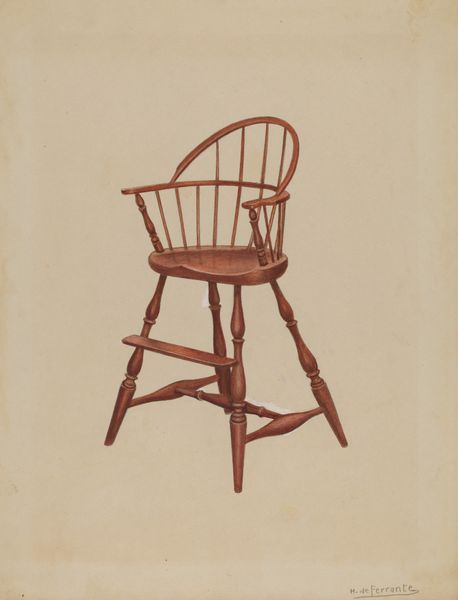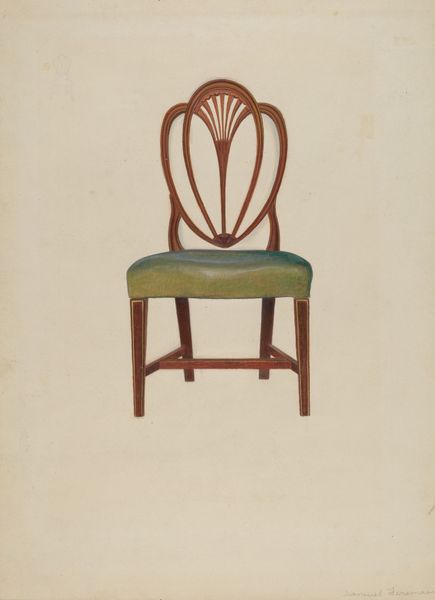
drawing, watercolor, pencil
#
drawing
#
watercolor
#
coloured pencil
#
pencil
#
watercolor
Dimensions: overall: 45.5 x 35.4 cm (17 15/16 x 13 15/16 in.) Original IAD Object: Overall height: 41", 20"wide. See d.s. for dets.
Copyright: National Gallery of Art: CC0 1.0
Editor: So this is "Windsor Comb-back Chair," a watercolor and pencil drawing from around 1939 by Ernest A. Towers Jr. It’s a simple depiction, but something about it feels nostalgic, almost like an idealized version of a simple, functional object. What stands out to you in this piece? Curator: I see a deliberate act of preservation and representation. The choice to depict a common, everyday object like a chair during this period points to a concern with American heritage and craft. It evokes the rise of industrial design, yet focuses on a handcrafted feel. What socio-political climate allows for an elevation of such quotidian objects? Editor: That's interesting! It's easy to overlook that context. It makes me wonder if this rendering was commissioned somehow...to preserve traditional designs? Curator: Exactly. Think about the context of the late 1930s – the lingering effects of the Great Depression, the impending shadow of war. The emphasis on ‘traditional American values’ served a purpose. Does this artwork engage in nationalistic narrative building? Is it celebrating American ingenuity during this time of hardship? Editor: It does feel less like an art piece and more like an attempt to record a tangible slice of Americana. I guess I initially interpreted it as simply nostalgic, but it is so much more charged when considering it as a historic preservation act. Curator: Consider its placement. Would this have been intended for a museum, a textbook, or a commercial catalog? This impacts its function. Thinking about the context enriches our interpretation of the piece. Editor: I didn't even consider it as being originally displayed or being used as part of something larger. Curator: See how exploring these historical and societal layers add more depth to the work beyond the visual presentation? We move from seeing a simple chair, to considering this object as a loaded artifact that has a historical footprint, which enriches our experience of art. Editor: I'm glad you pointed those things out, I now have a more comprehensive grasp of it. Thank you.
Comments
No comments
Be the first to comment and join the conversation on the ultimate creative platform.
